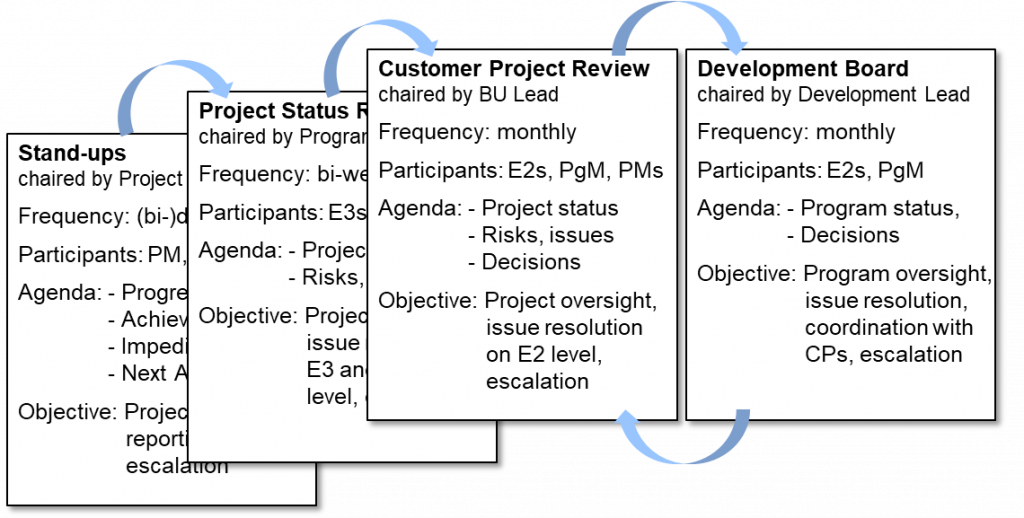Restructuring and Transformation: Companies must transform themselves in order to survive in a disruptive environment. But many transformations fail – not because of a lack of necessity, but because of recurring strategic and operational mistakes.
The market has changed and continues to change. Disruption is the keyword, in customer requirements, competition, sales markets, supply chains, regulation, politics, skilled workers, technologies and, last but not least, internal and external bureaucracy. Old business models no longer work properly, new ones want to be invented and implemented.
Restructuring and transformations are often that complex and far-reaching that failure would be unacceptable for companies and would even threaten their existence. From my experience, there are mainly 6 factors that are decisive for the success or failure of a corporate transformation, conversely, mortal sins that must be prevented when coming up:Transformation projects are essential for survival, but companies lack their own transformation expertise
1. Transformation as a strategic success factor

Companies that focus on transformation at an early stage – whether in digitalization, process optimization, organizational development or business model innovation – secure clear competitive advantages. First come, first served. It is crucial to understand this restructuring not as a reaction to crises, but as a strategic, continuous process. The prerequisite for success: The internal structures must be consistently adapted to the new requirements.
2. Top-Down Approach
Where a company should head is a decision that must be made in TOP management. While involving employees in decision-making should be a matter of course, the ultimate objectives must be decided at the top.
And then also driven from there. This means unconditional support of all initiatives and projects in the transformation by top management. Error and correction is possible, but always supported by the decision-makers. Especially when changing the basic values or the business model, consistency and authenticity are a must. If the management or the board of directors and supervisory board do not agree on this, a transformation will fail due to the conflicts that arise.
3. Holistic approach
This is then logically reflected in the transformation approach.
- Strategy and goals are set by the company’s management. The goal definition(s) should be “SMART”: specific, measurable, attractive, realistic and time-bound. This allows the goals to be checked and tracked for their clear and concrete formulation, e.g. as goals for the transformation projects.
The plural “projects” already shows that transformations are never isolated measures. Many areas of the company will always be affected – a little pregnant is not possible. Therefore, a holistic planning and approach is indispensable: - Organization, responsibilities, decision-making paths, etc. are expected to change. New or changed tasks will create new job profiles for employees, release some of them or create new recruiting needs elsewhere.
- New procedures and processes are used to create requirements for employee training and
- the mapping in the company’s IT systems (ERP, CRM, SCM, etc.) that must be implemented there.

As you can see, an individual view or independent island transformations is unthinkable, or they would lead to very unfavorable breaks. This has often been done wrong in other major initiatives, such as the introduction of or the switch to new ERP or CRM systems, and has led to the well-known cost explosions, delays and often the complete failure of such projects.
4. Implementation competence

Most companies owe their market position to their product, process and technical production expertise. They know what they are doing, no one can fool them. But an ERP introduction or even a restructuring or transformation is probably not something you do every day: In addition to challenging economic conditions, companies have internal weaknesses in the strategic and operational implementation of restructuring processes.
Internal deficits increase external dependence
As a result, they often do not have sufficient internal transformation competence and therefore have to rely and make themselves dependent on external service providers. These often use the situation to their advantage, which can lead to projects getting out of hand in terms of content, time and budget. Dependence on external consultants also increases the risk of losing control of one’s own program.
5. Program management as the key to success

Traditional project management is not enough for complex programs with multiple interlocking initiatives. Even among service providers, the focus is often on professional advice, not on professional program management. Therefore, it is essential to establish an experienced program manager on the company side who manages the overall program, identifies risks at an early stage and effectively accompanies the implementation.
An experienced program manager may incur higher fee costs than a project manager – but this investment pays off: through savings in the overall program, higher implementation efficiency and better results, not least thanks to forward-looking, intensive change management in the company organization.
6. Business in the Driver Seat
Another important detail in the transformation, which was also not considered in many ERP projects, for example, is the role of business and IT in the implementation.

Especially when it comes to a change in business model, procedures and processes, those for whom the whole thing is done also belong in the leadership role. Simply throwing a few requirements over the fence to IT and waiting for results will not work and will lead to many, expensive loops. The business must provide the product owners and fill them with heart and soul. This is the only way to achieve effective and rationalizing process optimization away from old habits, organizational hierarchies and processes. And this is where you pick up the workforce, you lay the foundation for the transformed business to be accepted and effectively implemented. But don’t forget: Restructuring is not a wishful thinking and requires discipline and stringent requirements management !
After all, a new business model will usually include a (often overdue) departure from traditional product orientation to consistent customer orientation. Holistic marketing will have to accompany and support them, and there will certainly be a need for change, if not advice. Which brings us back to the holistic view on transformation initiatives.
Conclusion: Keep control – with strong leadership
Approach your transformation with determination, structure and an eye for the big picture (including the future). But stay in control with an experienced program manager on your side to guide your organization safely through change.
Read more about program management and strategic transformations here…



















